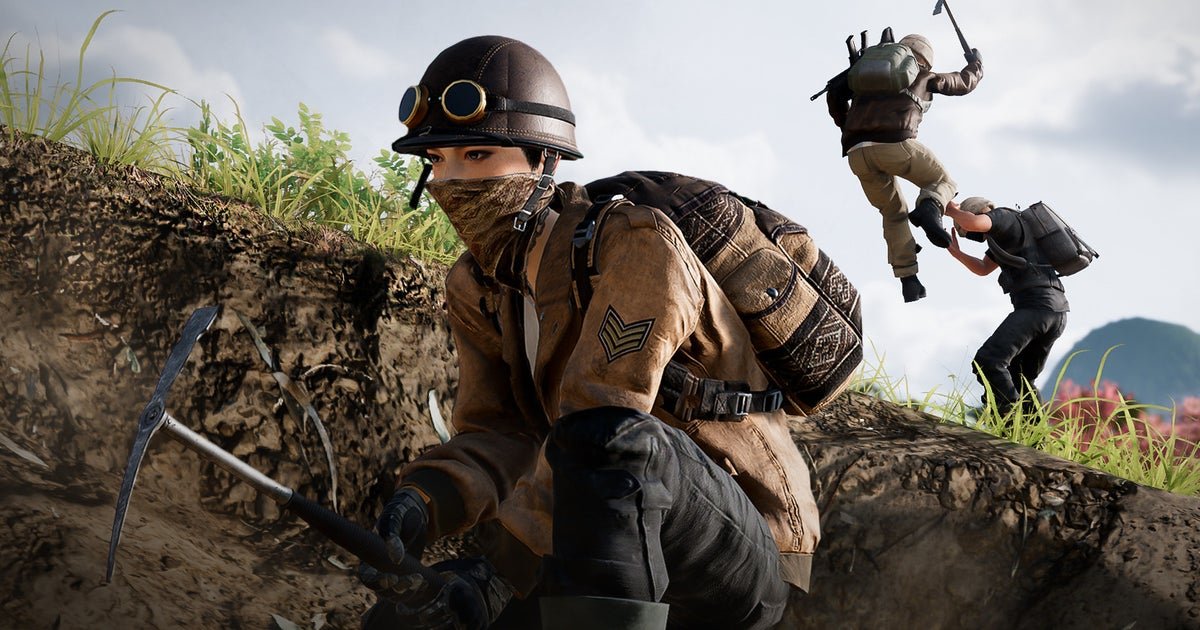[ad_1]
Whatever comes out of Brendan Greene’s sprawling 10-year trilogy of projects at PlayerUnknown Productions, it won’t be a successor to Player Unknown’s Battlegrounds, popularly known hereabouts as Plunkbat – the grandfather of battle royales, which Greene developed as creative director at Bluehole, a subsidiary of Krafton.
Speaking to me at the company’s Amsterdam offices this month, Greene referred briefly to the project that made his reputation. As you’d expect, he’s been bombarded over the years with requests to make a new PUBG, but having left Krafton in August 2021 to lead PlayerUnknown Productions as an independent studio, he’s under no real pressure to do so.
“We got seed funding when we left Krafton, and we’re still independent fully,” he told me. “I have control of the business. I have no investors telling me to make things. People have over time tried to get me to just make another PlayerUnknown game, but that’s not what I’m interested in. And they just think another PlayerUnknown game would essentially be an FPS game, right – go do that. I’m like, okay, no.”
Instead, Greene is currently working on Prologue: Go Wayback!, an exasperatingly named wilderness survival sim, out in early access this spring, which makes use of in-house machine learning technology.
I’ve played a WIP version of Go Wayback – preview to follow – and can tell you that it lacks such Plunkbatty features as shrinking maps or, erm, bicycles. Instead, it’s a lonely, challenging game of navigation, in which players have to find their way to a radio tower without perishing of cold, hunger, thirst or falling off cliffs. It’s also a stepping stone along the way to another game, Artemis, which will offer bigger maps and higher headcounts, amongst other things.
PlayerUnknown Productions has already released a sample of Go Wayback’s machine learning technology in the form of a tech demo, Preface: Undiscovered Worlds. I’m obviously pretty suspicious of anything that involves machine generation in this, the era of ChatGPT and Midjourney, but PUP’s tech isn’t quite in the same bracket. It’s based on in-house art, publicly available GIS (geographic information system) data, and satellite photography of the Czech countryside. I’ll be talking more about that in my preview.
Since launching Preface, which has a Mostly Negative user review consensus on Steam at the time of writing, PUP have faced additional calls to work on something Battlegroundsy, together with shows of support for Greene’s new direction.
“There was a comment on our Discord the other night where it was like, ‘just make PUBG 2’,” creative director Scott Davidson told me at the Go Wayback event. “And then a lot of people from the community piled on and said, ‘well you can just go and play PUBG’, you know, they’re trying to build something different here.
“You’re always going to have people who are like, ‘why didn’t you just do the thing that you did before, that we really liked’ and you’re like, ‘but the reason you liked it is because it was different than everything else’. So that’s what we’re doing again.”
It’s possible, however, that Go Wayback might become more Plunkbatlike with age. It’ll grow during early access in response to feedback, with the possibility of guns and multiplayer features.
While Greene may have moved on from PUBG, the same can’t be said for his old employer Krafton, who are trying to pioneer a “PUBG Universe” of games including mobile game New State. The PUBGverse once included Dead Space spiritual successor The Callisto Protocol, but this eventually became its own thing. Other forthcoming Plunko-stravaganzas include the recently announced top-down 5v5 shooter PUBG: Blindspot, aka Project Arc.
[ad_2]
Source link

